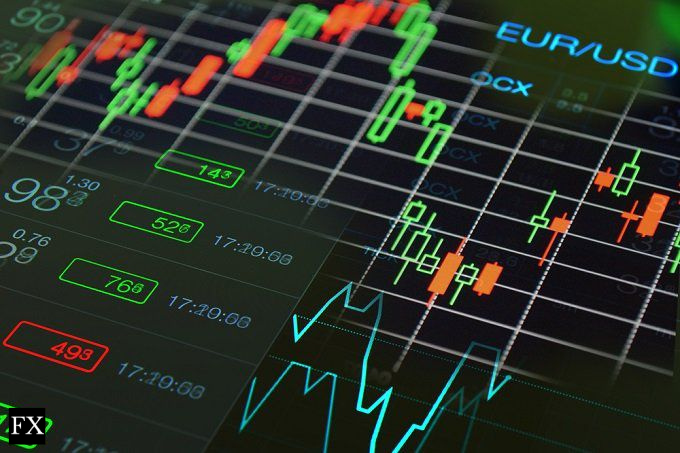The world of financial trading can be exhilarating, but also incredibly unpredictable. One moment everything seems calm, and the next, a sudden market move can send your positions reeling. A significant portion of this volatility isn’t driven solely by fundamental news; it’s also impacted by when trading happens, specifically by the ebb and flow of global market sessions and the timing of economic data releases. Do you find yourself frustrated by these unexpected shifts and wish for a more predictable trading environment? If so, timing your trades to coincide with calmer periods can be a game-changer. Let’s explore the specific times when market activity tends to be more subdued, allowing you to potentially trade with less stress and more control.
Understanding Why Market Volatility Fluctuates
Before we dive into specific trading hours, it’s crucial to understand why the market’s temperament changes throughout the day. Trading volume, liquidity (how easily assets can be bought or sold), and volatility are all interconnected. These factors are primarily influenced by:
- The Overlap of Global Trading Sessions: As the globe rotates, major financial centers come online and then close, leading to natural cycles of activity. The overlap between these sessions, like when London and New York are both active, tends to create the highest volume and, therefore, the greatest potential for price swings.
- Economic Data Releases: Scheduled releases of economic indicators, such as GDP figures, inflation data, and employment reports, can trigger significant market movements. Even if the numbers align with forecasts, the release itself serves as a catalyst for traders to reassess their positions, leading to volatility. It’s like the starting gun in a race – the news itself isn’t always surprising, but the reaction to it can be.
- The “Herd Mentality”: Sometimes, a seemingly minor event or piece of news can ignite a wave of buying or selling, regardless of whether it’s rationally justified. This “herd mentality” can lead to sharp and unexpected price movements, creating a chaotic trading environment.
Safe Havens: Trading Hours for Lower Volatility (All Times GMT)
If you prefer a less turbulent trading experience, these are the windows to keep in mind:
9:00 to 12:00 GMT: The Calm Before the US Storm
The Scenario:
This period falls between the peak of the European trading session and the opening of the New York session. European markets, which open around 7:00 GMT, see a flurry of activity early on, particularly around 8:30 when the UK releases key economic data. However, by 9:00 GMT, this initial excitement begins to subside.
What Happens:
Market activity tends to become more range-bound – meaning prices move within a relatively narrow band, providing less opportunity for sudden unexpected price jolts. Traders often use this time to assess their positions, rather than initiate aggressive new moves.
Why it Works:
The major European data releases are done, and the big US announcements are still on the horizon. This creates a window of relative calm.
The Exit Point:
The key US data announcements typically begin at 12:30 GMT, which is why 12:00 GMT is an excellent time to exit positions if you’re avoiding volatility. You’re getting out before the likely chaos.
21:00 to 00:00 GMT: Winding Down the US Session
The Scenario:
The New York trading session officially closes around 20:00 GMT. However, the immediate aftermath can see decreased liquidity, and thus, increased risk of “flash crashes,” where prices rapidly drop. These sudden dips can be incredibly dangerous for traders who are still active.
What Happens:
By 21:00 GMT, the probability of those sudden, disruptive movements diminishes considerably. Trading volume is reduced, which often implies quieter and more predictable market conditions.
Why it Works:
Most major US participants have already wrapped up their trading activities for the day, leading to a natural reduction in activity.
The Exit Point:
The Tokyo market opens at 00:00 GMT, which often brings another influx of traders. If you value smooth sailing, 00:00 GMT should be your exit cue.
2:30 to 5:00 GMT: The Asian Afternoon Lull
The Scenario:
This window arrives after the Tokyo trading session has completed its significant moves for the day, and Australian economic data (released at 1:30 GMT) is largely absorbed by the market.
What Happens:
The atmosphere becomes much calmer again. While Chinese data is released around 2:00 GMT, it’s generally not as high frequency as the US or European numbers and its impact tends to be less dramatic.
Why it Works:
The main Asian sessions have concluded, and there is a lull before the European traders begin their preparations for the next session.
The Exception:
Be aware of the potential for the Reserve Bank of Australia (RBA) rate decision, which occurs only once per month. It might cause a temporary spike in volatility.
The Exit Point:
5:00 GMT is a good stopping point, as London-based traders start to gear up for the European trading session and things can get more choppy.
The Choice is Yours: Action or Calm?

Ultimately, the best time to trade depends on your individual preferences and trading strategy. Do you crave the excitement and potential rewards that come with high-volatility periods? Or do you prefer a more predictable and less stressful approach to trading? Understanding the rhythms of the global trading day and the impact of scheduled economic releases can empower you to choose the environment that best suits your needs and risk tolerance. Whether you’re a fan of the “quiet times” or chasing the action, knowing when to trade is just as important as knowing what to trade.
By being mindful of the timing of your trades, you can significantly improve your odds of avoiding surprises and increasing your overall trading success.
We hope you have enjoyed this article, for more articles like this, tips for improving your trading, be sure to check our education articles.
Want to trade forex? Here’s a list of forex brokers to check out plus analysis and predictions for major currencies.

